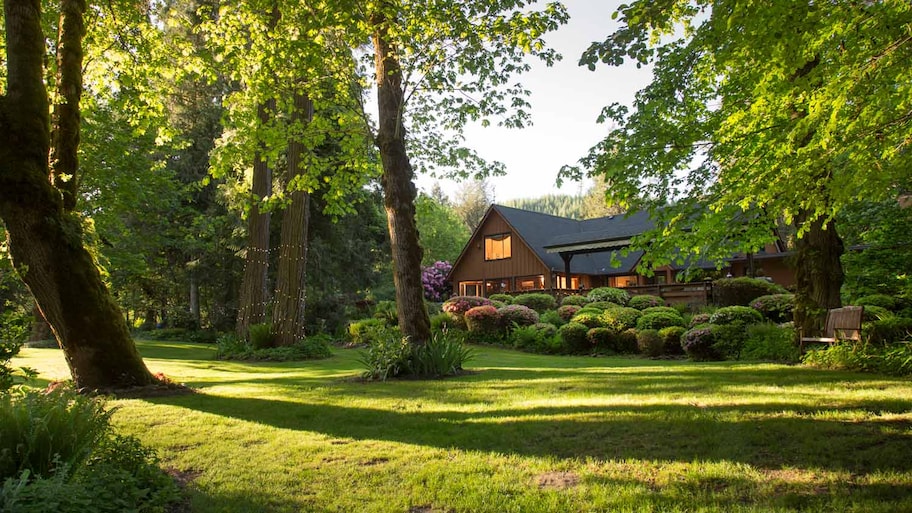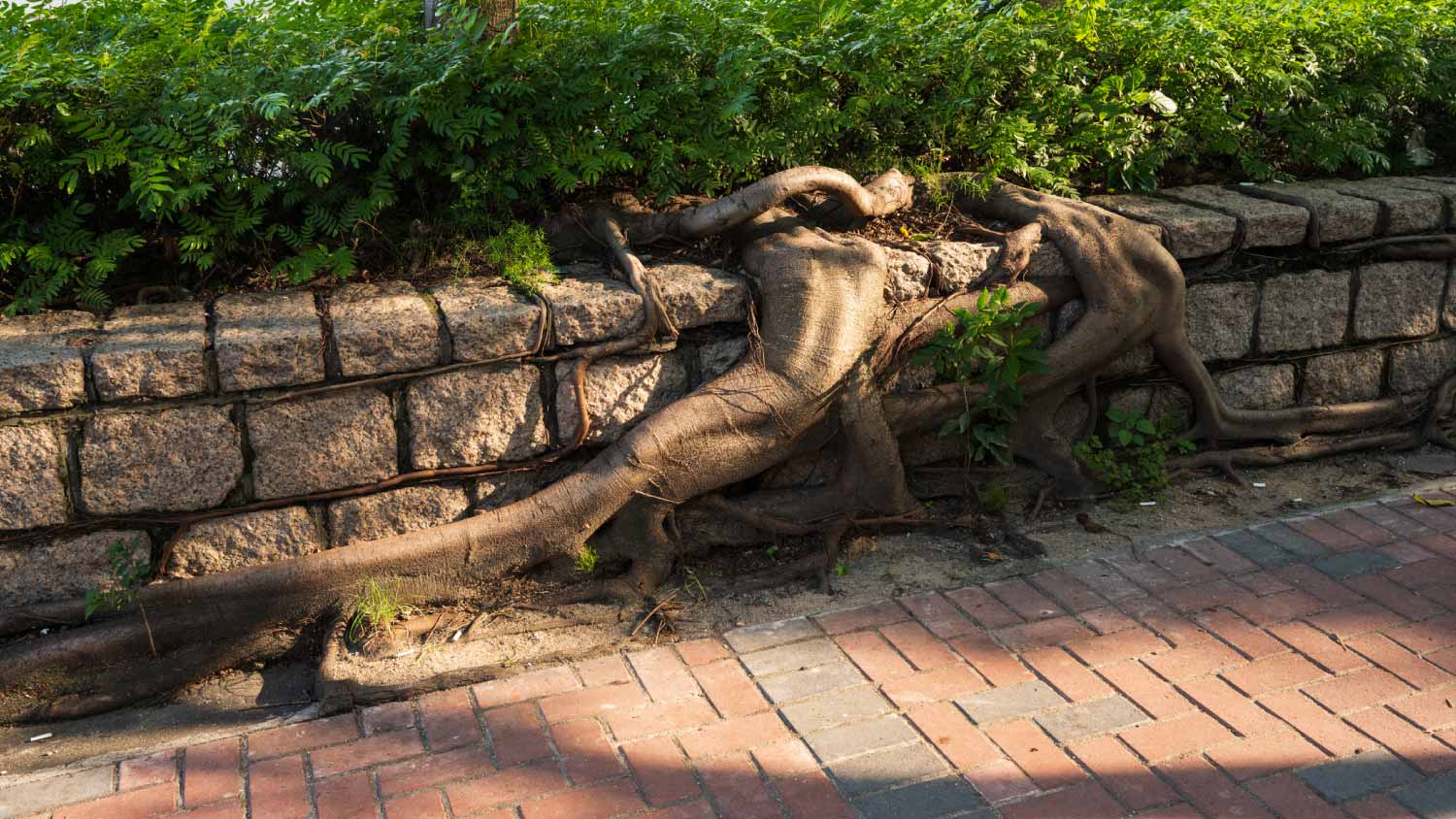6 Benefits of Pruning and Caring for Your Trees
A well-maintained tree is a happy tree


Tree maintenance involves trimming and pruning trees to encourage their overall health.
Yearly maintenance can boost your home’s curb appeal and protect it from any large falling branches.
Tree topping, which we don’t recommend, is a more aggressive pruning method of removing all the large branches from the tops of trees.
Trees add beauty and a feeling of established elegance to any home. However, poorly maintained trees can die before their time, create personal safety hazards for your family and even cause property damage to your home. For some trees, pruning or at least an annual inspection is recommended, especially if the trees are near your home, along a property line, or around power poles.
What Is Tree Trimming?
Tree trimming or pruning is the process of selectively removing branches from trees in order to promote new growth and boost the overall health of your trees. There are different styles and types of pruning, including:
Crown thinning: This process removes the smaller, weaker limbs from the tops of the trees to open up the tree canopy and allow more air and light in.
Dead pruning: Removing the dead or diseased limbs of the tree not only supports its health but also makes the tree—and your home landscaping—look much more appealing.
Crown reduction: Focusing on the overall height of the tree, crown reduction removes the small branches growing off larger branches so the tree doesn’t grow too heavy. This process is critical for younger trees to encourage proper growth.
Crown lifting: This process removes the lower branches and limbs that are weighing down the tree’s top branches. This process is typically only done on younger trees, as it can be harmful to older ones.
Pollarding: Pollarding is when you remove all branches so all that’s left is the framework of primary branches. This process can be done at regular intervals throughout a tree’s lifetime.
Tree topping is the process of removing large branches from the top of the tree and leaving only the lateral branches and stumps. It is sometimes referred to as hat-racking, rounding over, heading, or tipping. It sounds a lot like crown reduction, but crown reduction strategically prunes only the smaller branches in order to maintain the tree’s frame, while tree topping is a more haphazard lopping off of the tops of trees.
In some states, such as California, tree topping is actually prohibited as many arborists, and other experts believe that the process hurts trees by removing too many leaves and leaving wounds in branches where harmful insects can thrive. To keep your trees looking and feeling their best, it’s best to contact a local arborist who knows how to carefully and safely trim your tree.
The Benefits of Regular Pruning and Tree Trimming
Keeping up with tree maintenance can help you see some big benefits within your landscape.
1. Promote Tree Health
Pruning can prolong the life of your trees by removing dead, weak, insect-infested or diseased limbs before they start to rot and impact overall health. Regular trimming will also improve the overall appearance of your trees. With unwanted branches no longer drawing energy from the trunk, the desirable parts of the tree can flourish. Removing excess limbs may increase leaves, flowers, and fruit production too.
2. Prevent Pests
As trees become weak, overgrown, and diseased, they become magnets for all sorts of pests that love to nest in old wood. Regularly pruning your trees will prevent pesky pests from finding a home where they aren’t wanted.
3. Increase Sunlight
Another benefit of pruning is exposing more of the tree to sunlight and allowing a larger number of the tree’s leaves to undergo photosynthesis. In addition, more sunlight can get through the leaves to your grass or other landscaping, helping more of your plants to thrive.
Bonus: Tree trimming may also allow more natural light into your home.
4. Protect Your Home and Property
Tree branches hanging over your home can cause damage if they break off or slam into a home during a strong wind. Over time, additional damage can occur as tree branches burrow their way under shingles, causing roof leaks. Trees left to grow without trimming can also grow into power lines, creating a risk of power loss and further damage to the lines. While most utility companies regularly trim around overhead lines on or near public thoroughfares, some require homeowners to handle this task at their own expense for power lines spanning over private property.
5. Protect Your Family
Most importantly, regular tree trimming can prevent injuries to those who use your property by eliminating cracked branches that are in danger of falling, and low-hanging limbs that can be dangerous for those who bump into them. Proper pruning can also reduce the weight of a tree, making it less likely to fall in a snowstorm or from the constant strain of carrying a heavy load.
6. Boost Curb Appeal
A well-maintained landscape looks tidy and well-cared for, which can help lure in potential buyers if you’re thinking of selling. It can also just be a source of pride when your neighbors can’t stop ogling your perfectly coiffed trees.
Why There Are No Benefits to Tree Topping
Agriculture professionals and tree care companies agree that tree topping is a harmful practice. Here are just a few reasons why:
Topping removes too much of the tree’s leaves and stems that transport food to the tree, causing it to starve.
The excessive removal can allow too much sun to hit the tree at once, which can “shock” the tree.
The large cuts of tree topping can be a magnet for pests and disease.
Topping often forces the tree to grow what is known as “water sprouts,” small branches that grow straight up into the air. These branches are brittle and often look very unattractive, forcing you to re-prune and trim the tree sooner rather than later.
Because of the above reasons, a topped tree is forced to grow in survival mode, which can ultimately kill it.
Frequently Asked Questions
There are a few instances in which removing a tree is the best option. You might do this if the tree looks to be a major danger—potentially falling onto your home, your car, or other parts of your property—or it’s diseased beyond repair. A tree that is growing too close to your house might need to be removed to prevent mold growth.
The cost for a professional tree service runs anywhere between $200 and $760, depending on the size and type of the tree. It might also cost more if you live in a remote area or if the tree is difficult to access, though a pro might offer a discount if you have multiple trees to trim.
Aim to have your trees inspected and pruned in early spring. At this point in the year, tree service professionals can note where there is old growth from winter and cut that back to encourage new growth for the rest of the year. Pruning at the wrong time of the year could make your trees prone to diseases.





- Why Tree Topping Techniques Are Bad for Your Tree and Your Property
- 8 Reasons Why You Should Prune Your Trees
- When To Cut Down A Tree: 13 Ways To Tell
- Will a Topped Tree Grow Back?
- What to Know About Performing Tree Trimming Safety
- All Good in the Wood: Top 5 Signs of a Healthy Tree
- How to Save a Dying Tree: 8 Tips to Try
- Tree Topping vs. Crown Reduction: What’s the Difference?
- Here’s Where To Plant Trees In Your Backyard
- How to Prune an Apple Tree for a Bountiful Harvest










